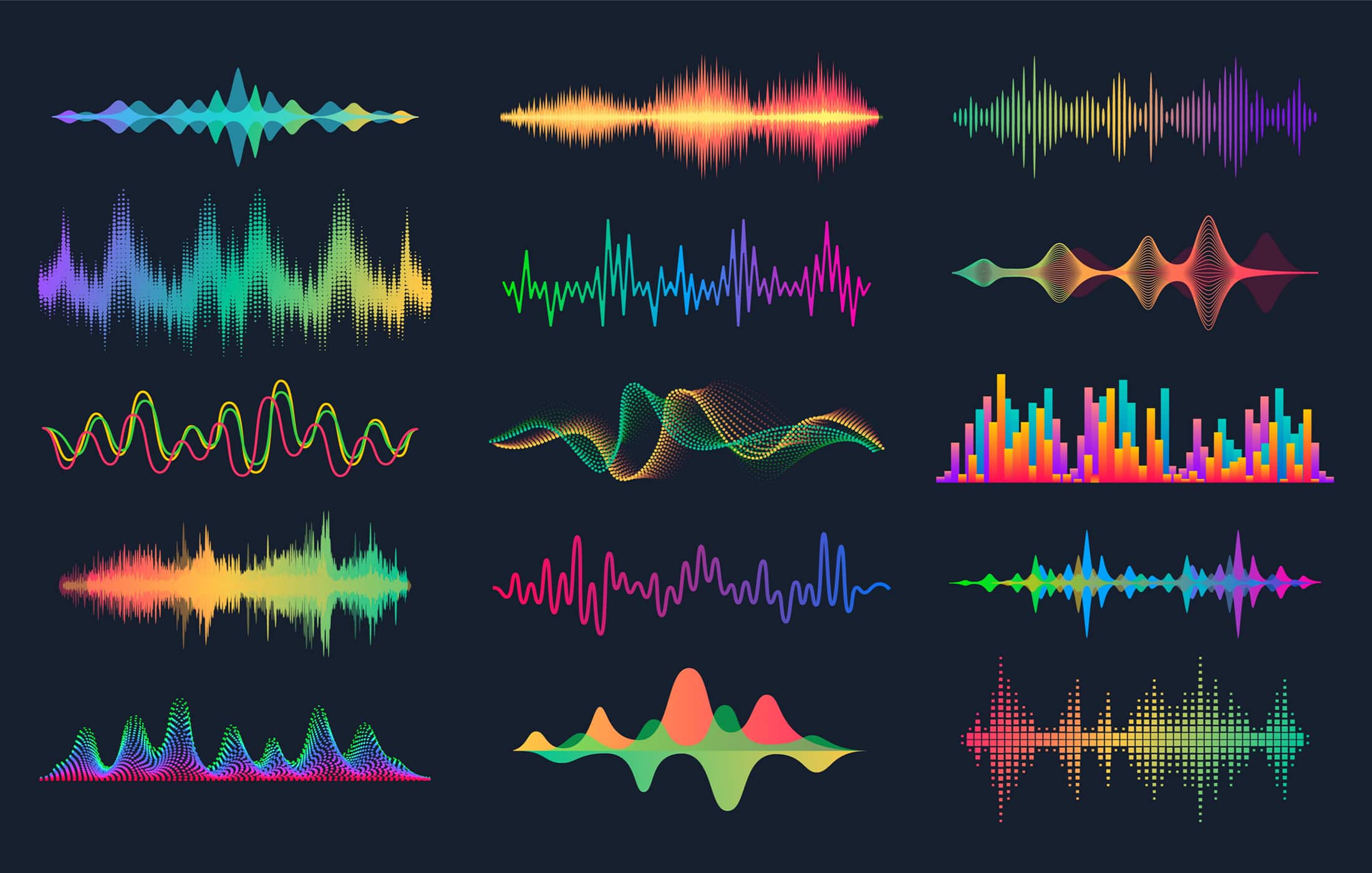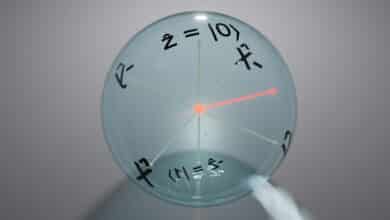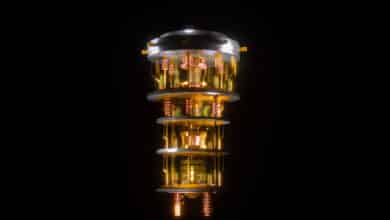Quantum Fourier Transform (QFT)

Table of Contents
Imagine you have a secret rhythm hidden in a long drum beat – the Fourier transform is like an ear that can pick out the tempo. In classical computing, the Fast Fourier Transform (FFT) converts time-based signals into frequencies, revealing hidden periodicities. In quantum computing, the Quantum Fourier Transform (QFT) plays a similar role, operating on the amplitudes of quantum states to unveil periodic patterns embedded in quantum information. It’s a powerful change of perspective – a rotation of the quantum “listening” basis – that underpins some of the most famous quantum algorithms.
From Classical to Quantum: What QFT Does
Classically, a Fourier transform takes a list of $$N$$ numbers (such as signal samples) and maps it to a list of $$N$$ frequency components. The QFT does the same but in superposition. Suppose a quantum register of $$n$$ qubits is in a state $$|x\rangle$$ (where $$x$$ is an $$n$$-bit value from $$0$$ to $$N-1$$, with $$N=2^n$$). The QFT maps each basis state $$|x\rangle$$ to a superposition of all basis states $$|k\rangle$$ weighted by complex phases $$e^{2\pi i x k/N}$$. In essence, it performs the discrete Fourier transform on the quantum amplitudes of the state . If the quantum state initially encodes some periodic structure (like a function that repeats every $$r$$ values), the QFT can interfere those amplitudes constructively for multiples of the period and destructively cancel elsewhere, causing the period to reveal itself upon measurement.
Formally, for an $$n$$-qubit state $$|x\rangle$$, the QFT produces:
$$$|x\rangle \mapsto \frac{1}{\sqrt{N}} \sum_{k=0}^{N-1} e^{2\pi i \frac{xk}{N}}\, |k\rangle$$$
which is exactly the classical DFT applied to the basis index $$x$$ (up to a normalization). When a register is in a superposition $$\sum_x \alpha_x |x\rangle$$, the QFT yields $$\sum_k \tilde{\alpha}_k |k\rangle$$ where $$\tilde{\alpha}_k$$ are the Fourier-transformed amplitudes of $$\alpha_x$$. This change of basis is unitary and reversible – applying QFT then its inverse (QFT†) returns the original state, just as an FFT followed by an inverse FFT recovers the original signal.
Why QFT Matters in Quantum Algorithms
The QFT is a cornerstone of several quantum algorithms that show exponential speedups over classical ones. Most famously, Shor’s algorithm for integer factorization uses the QFT to extract the period of a function related to the secret factors. By preparing a superposition of inputs and computing a periodic function (like $$f(a) = c^a \bmod N$$ for random $$c$$ in Shor’s algorithm), the period $$r$$ becomes encoded in the amplitudes. The QFT then maps the state to one peaked on multiples of the frequency $$k = N/r$$, collapsing to a value that reveals $$r$$ when measured. Without QFT, finding that period would require checking exponentially many possibilities, but QFT allows it to be found in polynomial time. Similarly, the QFT is central to quantum phase estimation, where it is used to find the eigenvalues (phases) of a unitary operator – a procedure that underlies algorithms for estimating molecular energies and solving linear systems. In general, whenever a quantum algorithm needs to identify a hidden periodicity or phase, the QFT is the tool of choice.
It’s important to note that the power of QFT comes from quantum parallelism and interference. The transform itself spreads the amplitude of one basis state across all others with different phase factors. If we were to measure immediately after a QFT without leveraging those interference patterns, we’d just get a random outcome. The trick in algorithms is to combine the QFT with prior steps that encode a problem’s solution in relative phases, so that after QFT, the correct answers interfere constructively. Because measuring a quantum state yields only one outcome, not every classical FFT application translates to a quantum speedup – you need the algorithm’s structure to ensure useful information is obtained with high probability. When that structure is present (as in Shor’s algorithm), the QFT enables exponential speedups that are impossible classically.
Efficiency and Circuit Implementation
One of the remarkable features of the QFT is its efficiency on a quantum computer. A classical DFT on $$N=2^n$$ data points requires on the order of $$N \log N$$ operations (via FFT). But a straightforward implementation would still use $$O(N^2)$$ basic operations. Quantumly, one might fear the QFT is exponential (since the state has $$N$$ amplitudes), but in fact it can be done with only $$O(n^2)$$ one- and two-qubit gates. The standard QFT circuit uses a sequence of Hadamard gates and controlled phase rotations that successively entangle the qubits with appropriate phase factors. For example, for 3 qubits, the circuit applies a Hadamard on the first qubit to create an equal superposition, then controlled-$$R_2$$ and controlled-$$R_3$$ rotations (phase shifts of $$\pi/2$$ and $$\pi/4$$) from the first qubit onto the others, then proceeds to the second qubit (Hadamard and controlled-$$R_2$$ on the third), and finally the third qubit (Hadamard). A final step of swapping qubit order is usually done to correct the bit-reversal that occurs during the transform. This structured sequence implements the Fourier transform exactly. As a result, the quantum circuit depth grows quadratically with $$n$$, in contrast to the exponential growth a classical FFT would need if naively applied to $$2^n$$ amplitudes . This is a key ingredient in QFT-based algorithms: an $$n$$-qubit QFT can be executed exponentially faster (in terms of $$N$$) than writing down the $$N$$-length result classically.
There have even been improvements for approximate QFTs: by omitting very small rotations, one can achieve an approximation in $$O(n \log n)$$ gates. Such approximations are often sufficient in algorithms where a tiny error is tolerable, further reducing the resource costs on quantum hardware.
Real-World Example: Shor’s Algorithm Period-Finding
To tie it all together, consider how the QFT is used concretely in Shor’s factoring algorithm. We have an $$n$$-qubit register (size about twice the bits of the number $$N$$ we want to factor) prepared in a superposition $$\frac{1}{\sqrt{N}}\sum_{x=0}^{N-1}|x\rangle$$. A quantum subroutine computes $$f(x) = a^x \bmod N$$ (for some random base $$a$$) into a second register. Thanks to quantum parallelism, we now have $$\frac{1}{\sqrt{N}}\sum_{x=0}^{N-1}|x\rangle|f(x)\rangle$$. The function $$f(x)$$ is periodic with some period $$r$$ (which is related to the factors of $$N$$). If we measure the second register, it collapses to a particular value $$y = f(x_0)$$, projecting the first register onto all $$x$$ that yield that $$y$$. Those $$x$$ differ by multiples of the period $$r$$. Thus the post-measurement state is an equal superposition of values spaced by $$r$$: $$|x_0\rangle + |x_0+r\rangle + |x_0+2r\rangle + \cdots$$. At this point, a classical observer still wouldn’t know $$r$$. This is where the QFT comes in: we apply a QFT to the first register. The mathematics of Fourier transforms tells us that the equal superposition of a periodic sequence will transform into a superposition strongly peaked at multiples of frequencies that are divisors of $$N$$ – effectively at states corresponding to $$k \approx N \cdot \frac{s}{r}$$ for some integer $$s$$. When we measure after the QFT, we are very likely to obtain an outcome from which $$r$$ can be deduced (by taking the measured value divided by $$N$$ and finding the nearest rational approximation). This quantum procedure finds $$r$$ in polynomial time, whereas classically finding $$r$$ (and thus factoring $$N$$) is believed to require super-polynomial time. The QFT is thus a crucial algorithmic accelerant, translating hidden periodicity into a measurable form.
Beyond factoring, the QFT-based phase estimation is at the heart of algorithms for computing eigenvalues of large matrices – which has applications from quantum chemistry (finding energy levels of molecules) to solving certain mathematical problems faster than known classical methods. The QFT can also be used for tasks like addition in quantum arithmetic circuits: with appropriate tweaks, a QFT on binary representations can add two numbers efficiently by exploiting the fact that addition in Fourier space corresponds to a phase shift. In summary, the QFT provides a quantum computer with a way to interfere amplitudes according to frequency components, unlocking solutions to problems where identifying a periodic pattern is key.
Intuition and Limitations
One way to build intuition for the QFT is to think in terms of waves. A quantum state (especially an equal superposition state) can be thought of like a wave with crests and troughs encoded as relative phases. The QFT, like a physical Fourier transform, takes a time-domain wave and represents it in the frequency domain. In the quantum case, the “time-domain” is the computational basis amplitude distribution, and the “frequency-domain” is another basis where the basis states correspond to different phase gradients across the original amplitudes. If the original state has a regular pattern (phase advancing uniformly from one basis state to the next, for instance), then in the Fourier basis it might concentrate entirely on one basis state corresponding to that phase gradient frequency. This is exactly how the QFT finds a period: a state whose amplitudes repeat every $$r$$ indices will, after QFT, show concentration at multiples of $$N/r$$. It’s analogous to how a pure tone in a sound wave transforms to a spike at its frequency.
However, the QFT does not give us the full power of the classical FFT in terms of output. In a classical FFT, you get the full spectrum of frequencies. In a QFT, the output is a quantum state entangling all those frequency components, and a single measurement yields only one result. Thus, the QFT needs to be used cleverly – usually one doesn’t directly “read out” the entire Fourier spectrum (doing so would collapse the superposition). Instead, quantum algorithms harness the QFT’s interference pattern to amplify the probability of measuring the answer they seek. This distinction is crucial: if you simply prepared a state with $$N$$ data points and performed a QFT hoping to get all Fourier coefficients, you’d be disappointed – you’d get one random frequency sample due to the act of measurement. So the QFT’s exponential speedup is only realized when it’s part of a broader algorithmic strategy that evades the limitation of single measurement outcomes. When used appropriately, as in Shor’s algorithm or phase estimation, QFT demonstrates one of the “secret sauces” of quantum computing: leveraging quantum mechanical phase and superposition to solve problems like finding periodicities exponentially faster than we know how to do classically.
In summary, the Quantum Fourier Transform is a beautiful quantum analogue of the classical Fourier transform, reinterpreted as a unitary operation on qubits. It highlights how quantum computers can change the basis of representation of information in ways that uncover hidden structure. Discovered in the early days of quantum algorithms (credited to Don Coppersmith and others), the QFT remains a paradigmatic example of the power of quantum computing – not as a standalone trick, but as a key ingredient that, when combined with entanglement and superposition, enables feats like the cracking of RSA encryption (through Shor’s factoring) and precise estimation of phases. It’s a prime example of how thinking quantum-mechanically – in terms of vectors and transformations – opens up new computational possibilities that simply don’t exist in the classical world.
Quantum Upside & Quantum Risk - Handled
My company - Applied Quantum - helps governments, enterprises, and investors prepare for both the upside and the risk of quantum technologies. We deliver concise board and investor briefings; demystify quantum computing, sensing, and communications; craft national and corporate strategies to capture advantage; and turn plans into delivery. We help you mitigate the cquantum risk by executing crypto‑inventory, crypto‑agility implementation, PQC migration, and broader defenses against the quantum threat. We run vendor due diligence, proof‑of‑value pilots, standards and policy alignment, workforce training, and procurement support, then oversee implementation across your organization. Contact me if you want help.



